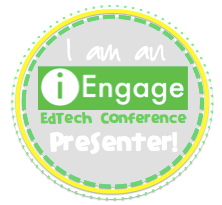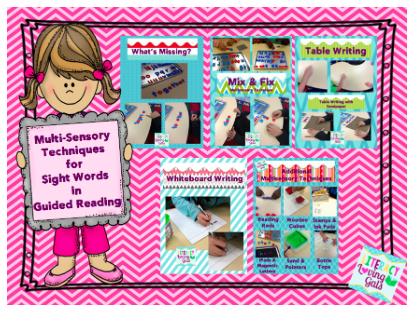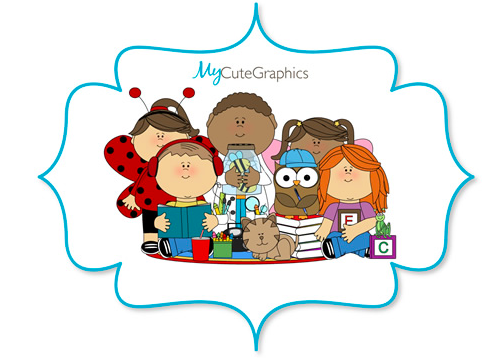I'm back to share more from Connie Hamilton's and Starr Sackstein's amazing book, Hacking Homework: 10 Strategies That Inspire Learning Outside of the Classroom. This post is dedicated to Hacks 5-10, as well as the Conclusion. If you missed my previous post from the first part of the book and are interested in reading it, please click HERE. Before I begin, below are a few tweets and articles from the authors regarding homework.
 |
| LOVE THIS! #LOL |
 |
| Click the image to read the article! |
- Play, though extremely valuable for a student's learning progression, isn't considered "real work" that can substitute for content that needs to be covered (p.86).
- Play can encompass a range of activities; not just games or outdoor sports, but all structured and unstructured activities that students choose to do on their own time, such as reading, music, or painting (p.86).
- The more we offer students opportunities to do the things they love outside of school, while connecting those activities to what was learned, the more they will approach learning from a fresh and engaged perspective during the day (p.87).
- Throw out worksheets (p.87). (This one is my all-time favorite!!)
- ...ask students to tinker with writing, an art project, or a science lab for one period and then ask them to reflect on what skills were being used (p.88).
- ... there are many standards that can be taught through different forms of play (p.91).
- Because school has gotten much more serious even for younger students, play is essential to helping connect learning to life in a meaningful and enjoyable way. These connections are what will make lifelong learners out of our kids (p.93).
- Homework doesn't have to be onerous; it can be enjoyable and should be (p.99).
Hack 6: Spark Curiosity Before the Lesson- Make Connections That Generate Interest in Learning
- Some teachers use homework exclusively as a means of practicing skills taught in class, overlooking potential opportunities to spark excitement about learning (p.101).
- Start to drop hints about future lessons, with the goal of getting students to explore upcoming material outside of class (p.103).
- Triggering curiosity can be as simple as creating a series of agree/disagree statements that ask students to make judgement calls connecting prior knowledge with upcoming information (p.104).
- When we allow students to approach a topic before we do so in class, they grow curious, follow their own lines of inquiry, and practice independence skills (p.106).
- ...practice shouldn't always mimic what has been done in class. We want to push students to apply ideas, skills, and concepts to new learning, developing the depth of their content understanding as well as their analytical abilities (p.106).
- Creating interest should be a primary goal of teaching. Our job as educators is to make learning fun so that students become adults who are lifelong learners; curiosity plays a huge role in this (p.106-107).
Hack 7: Use the Digital Playground- Harness Social Media for Learning
- We have to stop avoiding the digital shift and start embracing technology, as it is vital to how today's students learn in school, but even more so at home (p.111-112).
- Rather than force students to approach education the way adults always have, schools must meet them where they are, integrating technology and social media into learning both in and outside of the classroom to further digital skills that will be carried with them in the future once they are done with school (p.112).
- Students need to learn early about the magnitude of their digital choices (p.113).
- The more we fill their [students] toolboxes, the more resources they have to explore their interests and extend lessons beyond the classroom (p.114).
- For younger students, closed platforms like Edmodo, Meetup, or Kidblog help students practice good digital citizenship in class. For older students, use Twitter or Google Communities as a way to backchannel discussions both in and out of class (p.117).
- Social media, however, has the power to make the world a much smaller, more connected place. This is a medium with which students are already engaging, and often not for the best purposes, so teach them to use it effectively (p.120).
- We would never take kids to an unsupervised location and leave them alone, with no instruction, so why should that happen with social media (p.120)?
- Social media helps to marry the technology with the face-to-face experiences we encounter and helps develop interpersonal skills and literacy skills at the same time (p.126).
Hack 8: Amplify Student Voice- Incorporate Choice in How Kids Learn at Home
- Education generally uses a top-down model, ignoring the most important voice- the student's (p.127).
- The less ownership we give students, the less they have the ability to think for themselves (p.128).
- When we don't allow students to have a say, the purpose of the home learning is often unclear (p.128).
- When given the opportunity to make choices about home learning, most students develop sound options; sometimes even better ones than teachers (p.129).
- Instead of only one assignment for home, offer a "choose your own adventure" option in which students decide how to demonstrate their knowledge but still fulfill learning objectives (p.129).
- Sometimes it's a good idea to let students follow their own paths, even if you suspect it won't work out the way they plan. Failure serves as a wonderful learning experience in itself (p.132).
- Try not to limit kids to what works for you as a teacher. Offer suggestions, but be okay if they don't take them (p.132).
- Any time we highlight or showcase brilliant student work, we show kids that their ideas matter (p.133).
- We know that when interest is high students will create their own inquiry around a topic (p.133).
Hack 9: Team Up With Families- Model Instructional Strategies for Parents
- Without proper communication and explanation, parents won't understand the approach today's teachers are taking to meet the needs of 21st century learners, both in and out of school (p.141).
- All parents want their child to succeed, but success is often based on right answers and not deep understanding of concepts and skills (p.142).
- Changing parents' conceptions of learning is an important step toward teaming with them so students extend learning opportunities everywhere (p.143).
- Instead of predicting what you think your parents want or need, create a survey and solicit their feedback (p.145).
- Provide experiences for parents that will give them both a frame of reference for how they might support students at home and a better understanding of how learning occurs in your classroom (p.146-147).
- Provide strategies to parents (p.147).
- When you solicit parent feedback, you should share a summary of that feedback with the entire parent community, along with your plan for how you will use feedback to influence your future decisions (p.150).
- If we provide parents with tools for facilitating student success, honoring their key roles as co-educators in their children's lives, we--the teachers and the parents--convey a consistent and powerful message to students (p.156).
- Explicit examples, experiences, and concrete tools are all ways to help parents broaden their perspectives on how their kids learn (p.156).
*** Side Note: If you want more information on how to team up with families in their child's education, check out my post from Hacking the Common Core, dedicated to Hack 10: Involve Parents- Clarify Their Role.
Hack 10: Display Growth- Empower Students to Track Their Improvement and Display Progress
- Along with mandatory nightly homework assignments, many schools require that homework be graded, assuming that grades are what motivate students to do the work and that grades communicate what students learned (p.157).
- Students often receive little to no feedback for their homework, as there is just too much of it for teachers to make meaningful comments (p.158).
- As we stop forcing kids to comply with policies that don't facilitate learning and start making out of class work meaningful, we need to help students develop an understanding of who they are as learners, so they are able to express what they know and can do (p.159).
- Stop collecting and grading every assignment (p.159).
- Enrich student growth with only purposeful assignments (p.159).
- In using reflection as a tool in class, students learn to evaluate their tracked progress, discuss their goals and describe how they were able to meet or exceed standards, with specific reference to the strategies employed (p.162).
- Students need to receive targeted, personalized feedback that lets them know they are moving in the right direction and identifies areas in which they must continue to grow (p.163).
- Progress isn't about short-term points and compliance; it's about mastery and achievement over time (p.164).
- Feedback coupled with teacher- and peer- provided strategies and reflection facilitates student ownership (p.169).
- As we continue to reimagine what homework can be, we need to remember what the point of education is: to help students become more independent and engaged in their own learning by shifting toward a more student-centered experience (p.170).
Conclusion: It's Time to Rethink How Learning Happens Outside of School
- Mistakes happen (p.172).
- Filling students' time with oodles of work beyond the school day sends a negative message about how we value what students do outside of school (p.172).
After reading the quotes, tweets and articles above, do you believe it's time to start #HackingHomework? As I mentioned in my previous post, anyone who assigns students homework must read this book. It certainly provides valuable insight on what truly matters when trying to extend students' learning outside of the classroom. Ponder the tweet below. I certainly think it's time for a change. ;)
Happy Hacking!















































